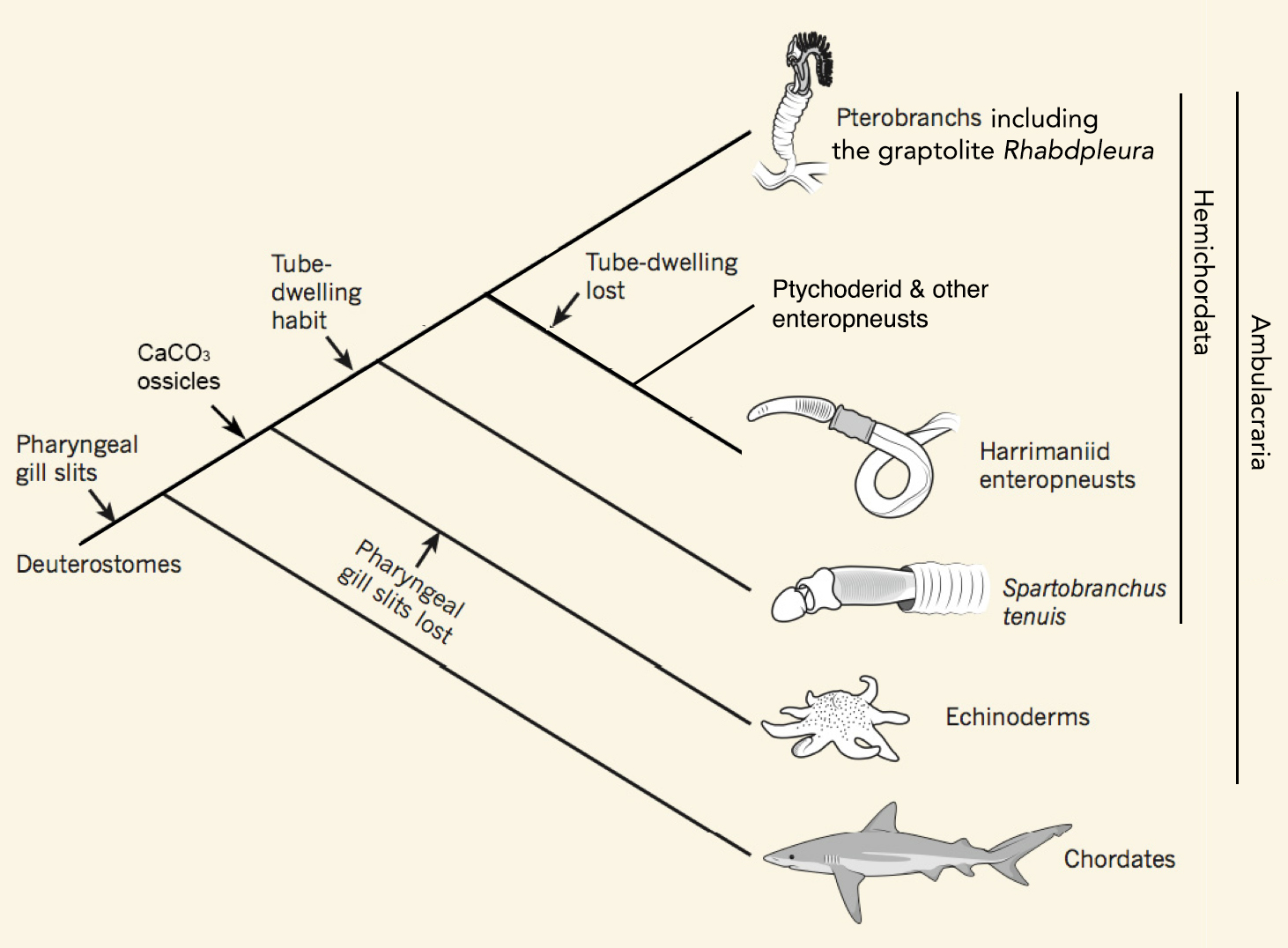|


B.Sc. University of Victoria (1994)
Ph.D. University of Alberta (2000)
Post-doc. University of Texas at Austin
|
Christopher
B. Cameron
Professor, Département de
sciences biologiques
|
Postal Address:
Courier Address:
phone:
fax:
e-mail:
|
Université de Montréal, Département de sciences
biologiques, C.P. 6128, Succ. Centre-ville,
Montréal, QC, Canada, H3C 3J7
Université de Montréal, Département de sciences
biologiques, Local B5421, 1375 Avenue Thérèse
Lavoie-Roux, Montréal, QC, H2V 0B3
1 (514) 343-2198
1 (514) 343-2293

@invertevo.bsky.social
|
|
"One thing to remember is to talk to the animals.
If you do, they will talk back to you. But if you don't talk to
the animals, they won't talk back to you, then you won't
understand, and when you don't understand you will fear, and when
you fear you will destroy the animals, and if you destroy the
animals, you will destroy yourself."
Cree speaker (attributed to Chief Dan George)
Research in the Cameron lab aims to understand the origin and
evolution of animal body plan diversity. The oceans are home to
the bulk of global animal diversity, and nowhere are body plans
more divergent than among the invertebrate animals. This
biodiversity is largely a result of the interplay between
evolution, development and the fluid environment. For this reason,
our research program uses a multidisciplinary approach including
comparative morphology and development, phylogenetics, genomics,
fluid mechanics and paleontology. We are broadly interested in the
origins and evolution of animal biodiversity, and the
deuterostomes, that evolutionary linage that includes
hemichordates, echinoderms and our own phylum, the chordates, is
where we make our greatest contributions.
The Origins of Extracellular Matrix Structures (EMS) in
Deuterostomes
Presently we are evaluating three hypotheses on the origin of
EMS in deuterostomes (Fig. 1). First, we are testing our
hypothesis that chordate gills are a deuterostome plesiomorphic
(ancestral) trait (Cameron et al. 2000), by characterizing acorn
worm gill form, function and symmetry. Second, we are testing our
hypothesis that the echinoderm skeleton is an ambulacrarian
plesiomorphy (Cameron & Bishop 2012), by characterizing the
calcium carbonate and protein composition of acorn worm ossicles,
ossicle development and diversity. Third, based on our finding of
Cambrian tubicolous acorn worms from the Burgess Shale (Caron,
Conway Morris & Cameron 2013; Nanglu et al. 2016), we are
testing the hypothesis that tubes are a hemichordate plesiomorphy.
We are characterizing the composition of pterobranch tubes, the
secretion of tubes by a living rhabdopleurid graptolite, and
experimenting with the induced phenotypic plasticity of the colony
structure (i.e., tubarium astogeny).

Fig. 1. Hypotheses on the origin & evolution
of deuterostome gills, ambulacrarian ossicles, and hemichordate
tubes (modified from Gee 2013, Nature).
Fluid Biomechanics & Animal Body Plan Evolution
We are characterizing the interaction of animal body plans with
the fluid environment using numerical, computational and
experimental methods. Unlike most selective forces, the physical
forces of fluid mechanics can be precisely quantified. In some
cases, changing this pressure results in drastically divergent
phenotypes. Two of the projects currently underway include i)
understanding the fluid interactions with salmon, shark and whale
lice, and ii) understanding the interaction of oil droplets with
the feeding appendages of zooplankton to mitigate its uptake in
aquatic and marine food webs. Another project aims to tightly
couple the selective force of fluid mechanics with developmental
repatterning to shed light on animal body plans evolution. This
work is in collaboration with the fluid dynamic research group
(École Polytechnique).
Discovering Hemichordate Biodiversity
The third major research axis of our group is to discover and
describe new species of Hemichordata. We are revising the taxonomy
of the phylum and we have more than tripled the number of
described species along the coasts of North America. Observations
on their biogeography suggest that the hemichordates are an
ancient and declining group, and that species loss in coastal
waters has accelerated due to human activities. Many species are
yet to be discovered from the largest habitat on earth, the deep
sea. For the most up-to-date information on Hemichordates species
see our
Hemichordata Images, Checklist
of Hemichordate Species, and Taxonomic
Key to the Enteropneusta.
Our research has been widely covered in the press and links to
some of the most recent articles are on the Publications
page. If you are interested in pursuing graduate studies or a
post-doc in the Cameron lab, or just looking for more detailed
information, please write.
Biologie 2431: Zoologie des invertébrés
Biologie 3293: Évolution et développement
Biologie
2432/ 6432: Stage invertébrés marins (Darling Marine Centre, Maine,
26 juin - 3 juillet 2025)
Biologie 6965 Biodiversité: importance, menaces,
solutions
Université de Montréal Home Page
Départment de Sciences Biologiques Home Page
All text and images accessible via the above links
copyright © 2000 - 2022 by C. B. Cameron. All rights reserved.
(revised December 2021)
![]()

